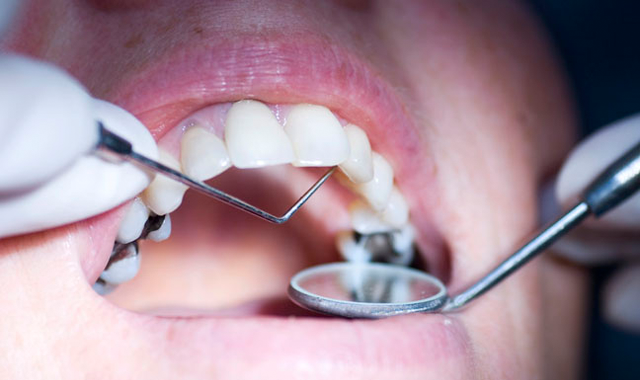Study finds watching cement dry could increase dental filling success
While examining how cement sets in real time, a recent study found that the cement used in dental fillings has ‘sweet points,’ that could have implications for increasing longevity and durability of dental fillings.

Watching cement dry sounds like about as much fun as watching paint do the same – but being patient and watching could have major implication for dental filling success.
While examining how cement sets in real time, a recent study out of Queen Mary University of London and Aberystwyth University found that the cement used in dental fillings has ‘sweet points,’ that could have implications for increasing longevity and durability of dental fillings.
The ‘sweet points’ were “when the cement starts to approach the toughness of the tissue that our teeth are made of and occur in first 12 hours of setting.” Researchers discovered that the cement sets in fits and starts, not continuously as previously believed, giving insight into the timeline of the formation and filling of cracks.
More emerging research: New study finds troubling rates of dental implant complications
“Contrary to convention, we find setting is non-monotonic, characterized by abrupt features not previously detected, including a glass-polymer coupling point, an early setting point, where decreasing toughness unexpectedly recovers, followed by stress-induced weakening of interfaces,” the study reported. “Subsequently, toughness declines asymptotically to long-term fracture test values.”
The researchers examined bioactive glass ionomer cement, made from glass powder, liquid polymer and water, a popular alternative in the UK to mercury amalgam that has been used in dentistry for over 40 years. Using computer models and intense beams of neutrons, they studied the surface between the glass particles and neighboring polymer as the cement strengthened.
Continue to page two for more...
“Dental fillings are really complex materials,” said co-author Professor Neville Greaves from Aberystwyth University. “Using neutrons we have discovered how mechanical toughness develops, element by element. This is fundamental physics in action for the general good.”
“Most of us have fillings in our teeth and know that a crack means a trip to the dentist for a replacement,” added co-author Dr. Gregory Chass from Queen Mary University of London. “Our work opens up the possibility of tailoring the strength of non-mercury cements by homing in on the special setting points … to make dental fillings that not only last longer but could prevent future tooth decay.”
More emerging research: Study finds nanodiamonds might prevent tooth loss after root canals
In addition to dental fillings, the findings could have implications for other industries (such as construction or road maintenance) that use cement.
The study, “Atomic and vibrational origins of mechanical toughness in bioactive cement during setting,” was published in the journal Nature Communications.
Oral Health Pavilion at HLTH 2024 Highlighted Links Between Dental and General Health
November 4th 2024At HLTH 2024, CareQuest, Colgate-Palmolive, Henry Schein, and PDS Health launched an Oral Health Pavilion to showcase how integrating oral and general health can improve patient outcomes and reduce costs.
Episode 31: Dentsply Sirona Implant Announcements
September 30th 2021DPR’s Editorial Director Noah Levine sat down with Gene Dorff, Dentsply Sirona’s group vice president of implants and Dr. Dan Butterman to review several big announcements the company made in the arena of implants during Dentsply Sirona World 2021 in Las Vegas.